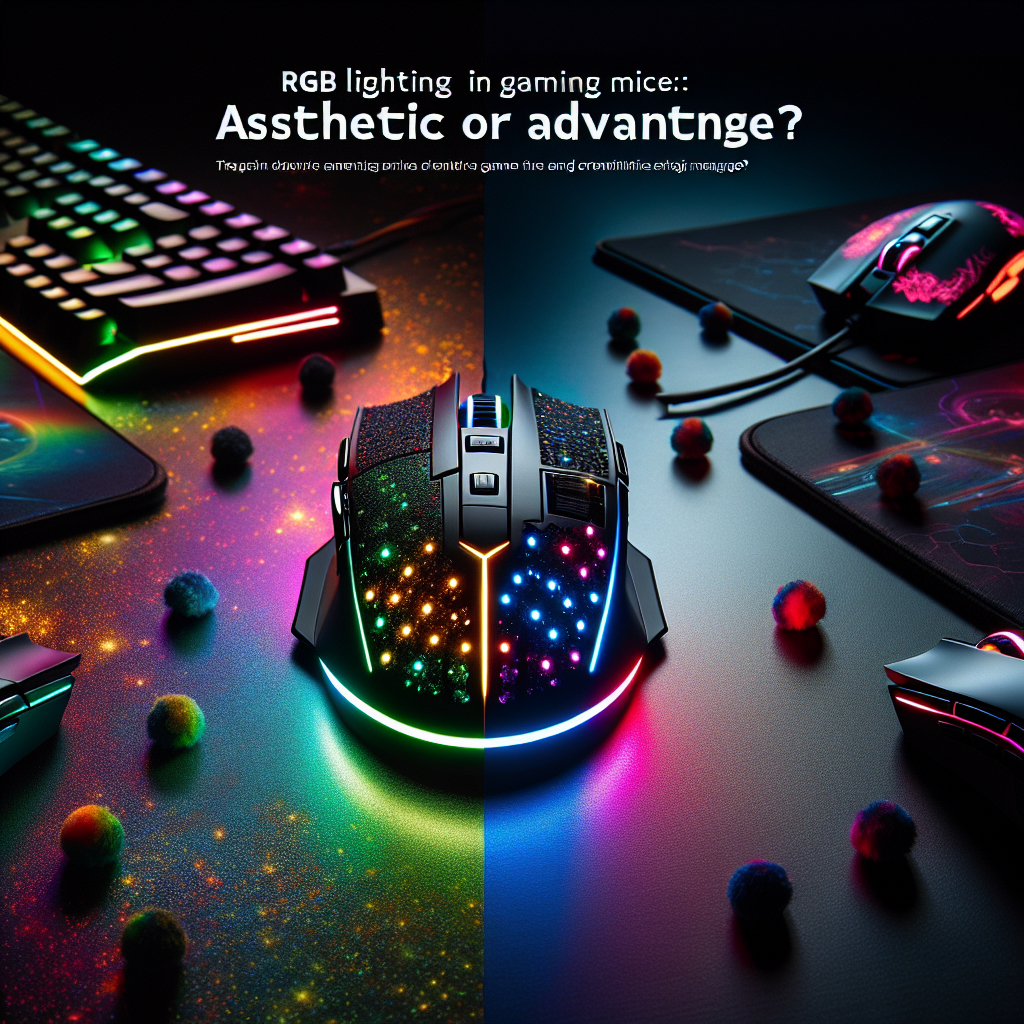RGB Lighting in Gaming Mice: Aesthetic or Advantage?
In recent years, RGB lighting has become a hallmark of modern gaming peripherals, with gaming mice leading the charge. As the eSports and gaming communities grow, enthusiasts are increasingly faced with a plethora of options when it comes to equipment, each boasting vibrant, customizable RGB lighting effects. But the question remains: Is this colorful illumination merely a superficial aesthetic, or does it provide a tangible advantage in gameplay? Let’s delve into the phenomenon of RGB lighting in gaming mice to understand its implications on functionality, design, and overall player experience.
The Aesthetic Appeal of RGB Lighting
One of the most immediate attractions of RGB lighting is its visual appeal. Gaming setups have evolved into intricate displays of neon lights and colorful atmospheres that reflect individual personalities and gaming identities. RGB lighting in gaming mice allows users to create customized color schemes, sync lighting effects with other peripherals, and enhance the overall aesthetics of their gaming rigs.
Many gamers passionately devote hours to fine-tuning their setups, making them look not only visually stunning but also uniquely personal. RGB lighting can be configured to pulse, cycle, or react to in-game actions, adding an extra layer of immersion to the gaming experience. As gaming has largely become a spectacle through platforms like Twitch and YouTube, showcasing a visually appealing setup can also enhance one’s online presence, drawing in viewers and followers.
Performance: The Functional Aspect
While the beauty of RGB lighting is undeniable, the crucial question is whether it provides any performance benefits. Traditional gaming mice focus primarily on ergonomic design, sensor accuracy, and response time, ensuring that gamers have the tools they need for competitive play. RGB lighting is often considered a secondary feature, but some manufacturers argue that it can aid in gameplay through improved visibility and distraction management.
-
Enhanced Visibility: For competitive gamers, every detail matters. RGB lighting can provide visual cues, such as indicating DPI settings or in-game actions. For instance, some mice change color when switching between sensitivity profiles, allowing players to make quick adjustments without having to glance at software on their screens.
-
Customization for Quick Access: Many players prefer to customize buttons on their mice for various in-game functions. The ability to assign different lighting effects to specific functions can help gamers quickly identify which command they are about to execute, potentially improving reaction times during intense gameplay.
- Mood and Focus: While not directly related to performance, a well-lit gaming environment can enhance a player’s focus and mood. The right colors may help create an atmosphere that some players find conducive to their gaming performance, thereby improving overall focus and enjoyment.
The Detractors: Is It Just a Gimmick?
Despite the potential benefits, many gamers argue that RGB lighting is simply a gimmick—more about marketing than utility. Critics point to the fact that while these aesthetic features might enhance a gaming setup, they rarely impact the mechanics of the game itself. Serious players often prioritize mouse specifications like weight, grip style, sensor quality, and buttons over flashy lights.
Additionally, RGB lighting can sometimes distract rather than assist. For players requiring intense concentration, the pulsing and flashing of lights could serve as visual noise, leading to an increased likelihood of distraction during crucial moments. Moreover, some players are cautious about RGB lighting consuming additional power or affecting battery life in wireless models, arguing that performance should always take precedence over aesthetics.
Conclusion: A Balance Between Aesthetic and Advantage
In the end, whether RGB lighting in gaming mice is viewed primarily as aesthetic or advantage largely depends on individual preference. For casual gamers and enthusiasts, the personalization and aesthetic appeal are essential for creating an immersive gaming environment. For competitive players, the focus predominantly remains on performance, with RGB lighting being largely an entertaining add-on rather than a necessity.
As the gaming industry continues to evolve, one thing is clear: RGB lighting has become a significant aspect of the gaming culture that represents both the artistry of design and the pursuit of performance. The most effective approach is thus a balance—recognizing that while a gaming mouse should excel at its core functionalities, bringing a visual flair into the mix can enhance the experience, producing motivation and creativity in the digital battlefield. Ultimately, it is up to the individual gamer to determine what role RGB lighting will play in their gaming journey—whether as a flashy style statement or a component of their competitive arsenal.




